Congratulations on your new horse!
Rest assures that this exciting journey is filled with learning and joy.
But as a first-time horse owner, you might be wondering how to take the best care of your equine companion.
If yes, let us walk you through our essential first-time horse owner guide.
Let's get started on this rewarding adventure.
Understanding Horse Basics
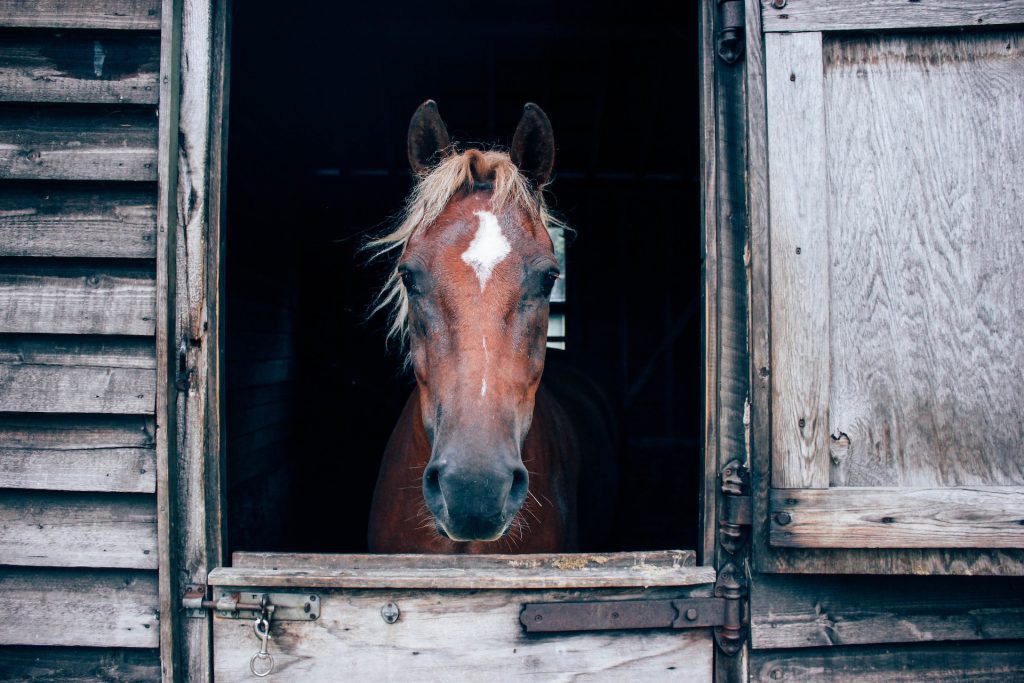
Horse anatomy is fascinating, and understanding it is key to caring for your new friend. A horse's body has unique features like a large chest for lung and heart capacity, perfect for their running prowess. They have a strong back to carry weight and powerful legs for speed and agility.
Their hooves, made of a tough protein called keratin, require regular maintenance.
When it comes to breeds, there's a wide variety to choose from. Thoroughbreds are known for racing due to their speed and agility.
Clydesdales, with their large build, are great for heavy work. For beginners, breeds like the American Quarter Horse or the calm and sturdy Morgan can be more suitable.
Besides, understanding horse psychology is crucial for a strong relationship with your horse. Horses are prey animals, so they are naturally alert and can be easily spooked. They are also social creatures, thriving on companionship and a clear social hierarchy. This means they feel safest and happiest in a stable social group.
Their behavior is often a reflection of their environment and handling. A horse that feels safe and respected will be calm and cooperative. They communicate through body language – a flick of the ears or tail, the position of their head – all these cues help you understand their feelings and needs.
Patience and consistent, gentle handling are the best ways to build trust and a strong bond with your horse.
Essential Needs of a Horse: Diet, Shelter, and Space
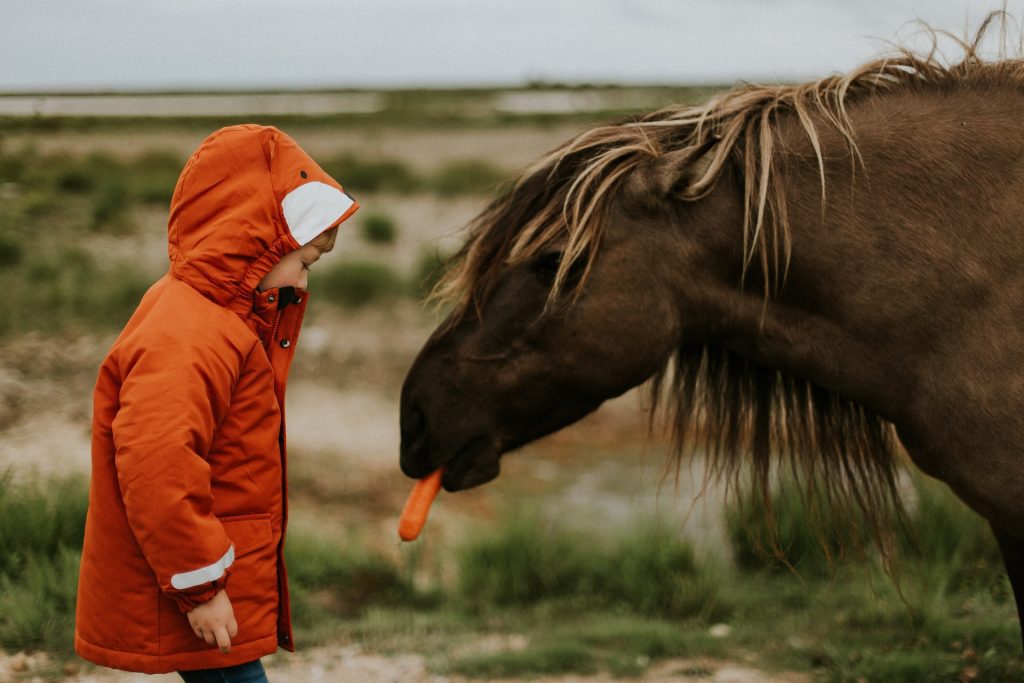
A horse's diet, shelter, and space are critical to its health and happiness.
Let's start with diet: horses are grazing animals, so good quality hay or grass should make up the bulk of their diet. They also need a balanced intake of grains and commercial feeds to provide energy and essential nutrients. Don't forget about clean, fresh water available at all times – hydration is key.
Shelter is just as important. Horses need a dry, clean place to rest and seek refuge from weather extremes. A well-ventilated barn is ideal, protecting them from rain, wind, and excessive heat. Regular cleaning of their living area prevents health issues and ensures their comfort.
Space is another essential need. Horses are built to move, so ample space to roam and exercise is vital for their physical and mental health. A paddock or pasture that allows free movement and social interaction with other horses is ideal. This space not only allows them to exercise but also to exhibit natural behaviors, which is crucial for their well-being.
Balancing these three essentials – diet, shelter, and space – will keep your horse healthy, content, and ready for the adventures you'll share together.
Preparing for Your Horse
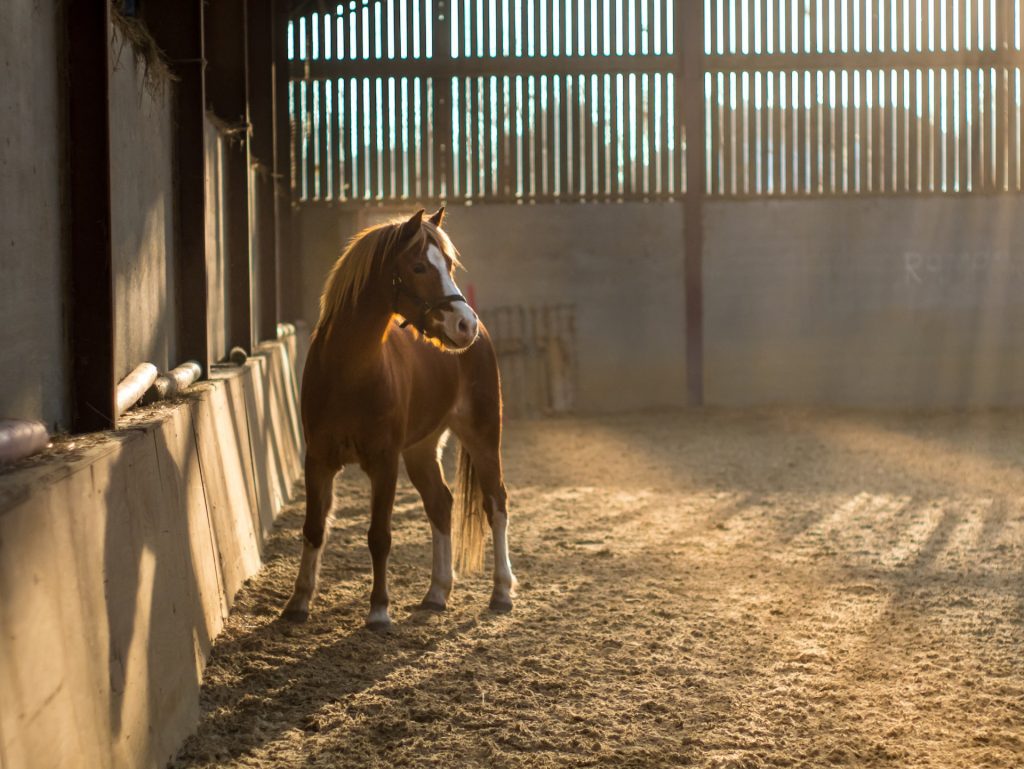
Getting ready for your horse involves gathering essential equipment and creating a safe, comfortable environment.
First, let's talk about the essentials:
- a good quality halter and lead rope for handling
- a sturdy saddle and bridle for riding
- grooming tools like brushes and hoof picks to keep your horse clean and comfortable
Your horse's barn should be a haven. Ensure it's spacious enough, with proper ventilation to keep the air fresh and reduce the risk of respiratory issues. Bedding is vital – straw or shavings work well to provide a soft, absorbent layer on the barn floor.
In the barn, you'll need feed and water buckets. Choose durable, easy-to-clean materials. Also, consider a salt lick and toys to keep your horse entertained and prevent boredom.
Fencing around the pasture should be secure and safe to prevent escapes and injuries. Regular checks and maintenance are crucial to keep it in good condition.
Lastly, create a first-aid kit specifically for your horse. Include horse care supplies like antiseptic, bandages, and a thermometer. It's always better to be prepared for any minor injuries or health issues.
With these preparations, you'll create a welcoming environment for your horse, ensuring they feel at home and well-cared for right from the start.
Daily Care and Management
Feeding your horse correctly is vital for their health and well-being. The backbone of their diet is forage, like hay or pasture grass, which should be available most of the time. This supports their digestive system and mimics their natural grazing behavior.
In addition to forage, many horses benefit from a mix of grains or commercial equine feeds. These provide extra energy and nutrients, especially important for working horses or those with higher nutritional needs. However, it's crucial to balance this with their forage intake to avoid overfeeding.
A regular feeding schedule is key. Ideally, feed your horse two to three times a day at consistent times. This routine helps their digestion and keeps them calm and content. Remember, sudden changes in diet or feeding times can lead to health issues, so any adjustments should be made gradually.
Lastly, always ensure they have access to clean, fresh water. Hydration is as important as their solid food intake.
Grooming basics: Techniques and Tools
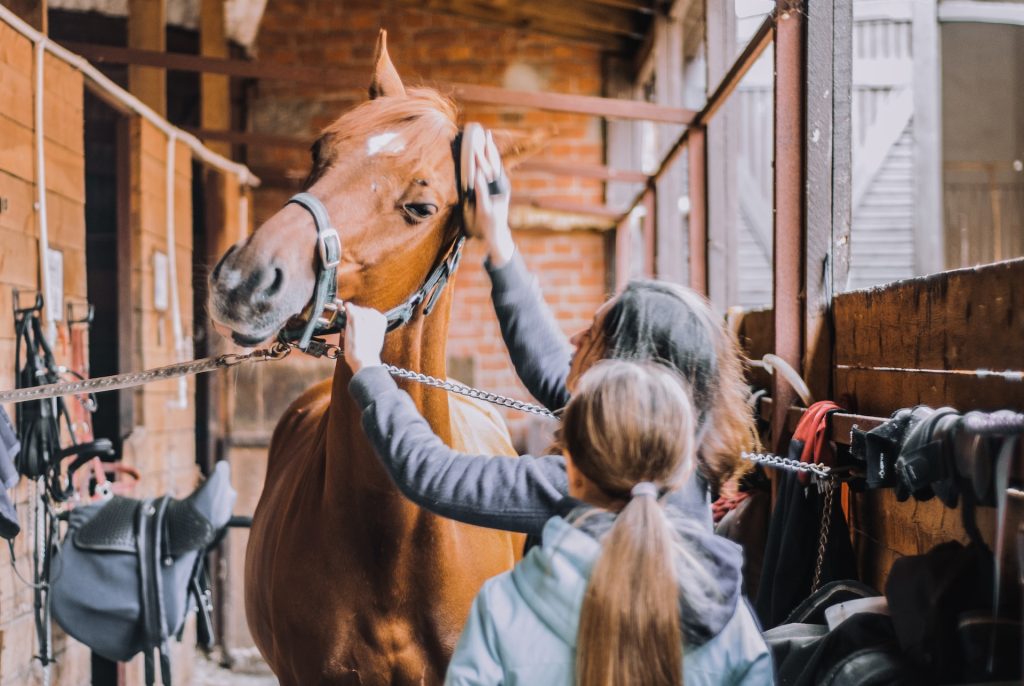
- Brushing: Start with a curry comb to loosen dirt and stimulate the skin. Follow with a dandy brush for removing dirt and hair, and finish with a body brush for a smooth coat.
- Mane and Tail Care: Use a mane comb or brush to gently detangle the mane and tail. Be patient to avoid breaking the hair.
- Hoof Care: Clean hooves daily with a hoof pick to remove debris and prevent infections. Regular trimming by a farrier is also essential.
- Bathing: Bathe your horse occasionally with horse-specific shampoo. Rinse thoroughly to avoid skin irritation.
- Fly Control: Apply fly spray or use fly masks and sheets to protect against insects, especially in warmer months.
- Tools to Have: Curry comb, dandy brush, body brush, mane and tail comb, hoof pick, sponge, and horse shampoo.
Regular grooming not only keeps your horse clean but also strengthens your bond and allows you to spot any health issues early.
Exercise and Training: Establishing a Routine
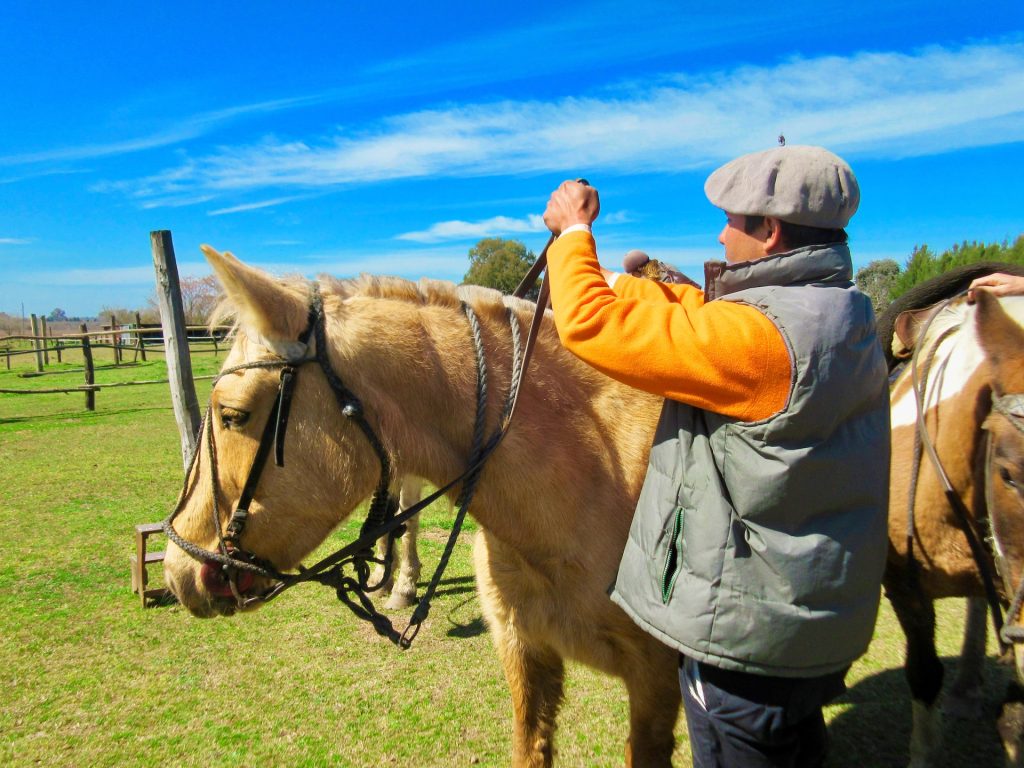
Developing a consistent exercise and training routine is essential for your horse's physical and mental well-being. Here's how you can establish an effective routine:
- Assess Fitness Level: Start by understanding your horse's current fitness level. This will help you create a suitable exercise plan.
- Gradual Increase: Begin with light exercises, gradually increasing intensity and duration to avoid injury. This could include walking, trotting, and eventually cantering.
- Variety is Key: Incorporate different types of exercises like trail riding, arena work, and groundwork. Variety keeps your horse engaged and stimulates their mind.
- Regular Schedule: Aim for a regular schedule. Consistency helps your horse understand and anticipate their routine, reducing anxiety and promoting discipline.
- Rest Days: Include rest days in your routine. Horses, like humans, need time to recover and rejuvenate.
- Training Goals: Set achievable training goals, whether it’s improving gait, mastering new skills, or building endurance. Celebrate small victories to keep you and your horse motivated.
- Monitoring Progress: Keep track of your horse's progress and adjust the routine as necessary. Pay attention to their response to exercise for signs of fatigue or discomfort.
- Professional Guidance: Consider working with a professional trainer, especially for specific disciplines or advanced training.
A well-planned exercise and training routine not only keeps your horse in good shape but also strengthens the bond between you, as you work and learn together.
Health and Wellness Tips for Your Horse
Recognizing signs of good health in horses is crucial for proactive care. A healthy horse should have a shiny, smooth coat, clear and alert eyes, and a calm, responsive demeanor. Their appetite should be regular, and their weight should be stable, with ribs not visible but easily felt.
Healthy horses also have consistent, firm bowel movements and regular, even hoof growth. Listen for clear, unlabored breathing and watch for a steady gait without limping or stiffness.
Common health issues in horses include:
- Colic
- Respiratory problems
- Skin conditions
- Hoof diseases like laminitis
Preventive measures are key to avoiding these issues. This includes maintaining a balanced diet, ensuring regular exercise, keeping their living environment clean, and monitoring for any signs of distress or illness. Regular deworming and pest control are also important to prevent parasites and insect-borne diseases.
Above all, schedule regular check-ups and vaccinations with a veterinarian. These visits are essential to maintain your horse's health, catch any issues early, and keep them up-to-date on necessary vaccinations.
Tips for Bonding with Your Horse
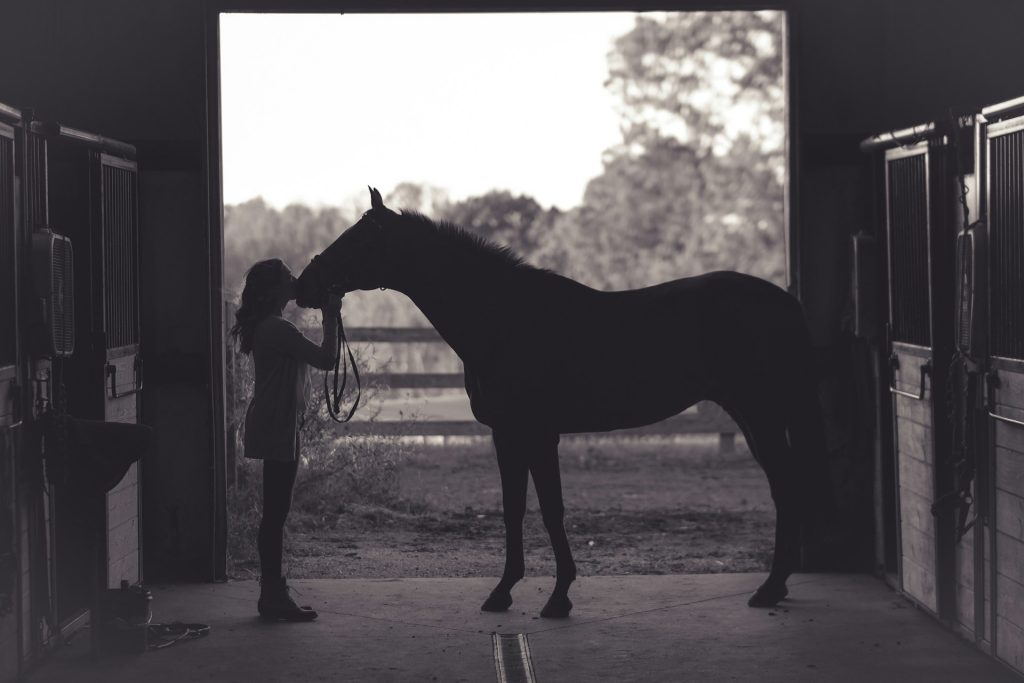
- Spend Quality Time Together: Regularly spend time with your horse beyond riding and training. Just being around them, talking softly, and gentle petting can strengthen your bond.
- Observe and Learn: Pay attention to your horse's body language and vocalizations. Understanding their way of communicating helps in building a strong, empathetic relationship.
- Consistent Routine: Horses thrive on routine. Consistency in your interactions and daily care builds trust and a sense of security.
- Patience is Key: Building a bond takes time. Be patient, especially with a new or nervous horse. Rushing the process can lead to mistrust.
- Positive Reinforcement: Reward good behavior with treats, praise, or gentle strokes. Positive reinforcement encourages trust and a positive association with your presence.
- Respect Their Space: Recognize and respect your horse's personal space. This respect is a fundamental part of building a mutual trust.
- Engage in Varied Activities: Mix up your activities. Trail rides, grooming sessions, and groundwork can all contribute to a stronger bond.
Owning a horse is a lifelong commitment that brings immense joy and responsibility. This guide is your first step towards a fulfilling horse ownership journey, paving the way for a deep and lasting bond with your equine companion.




